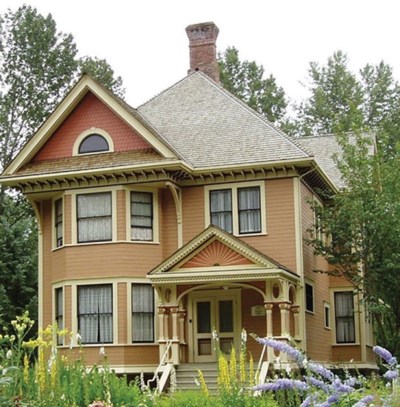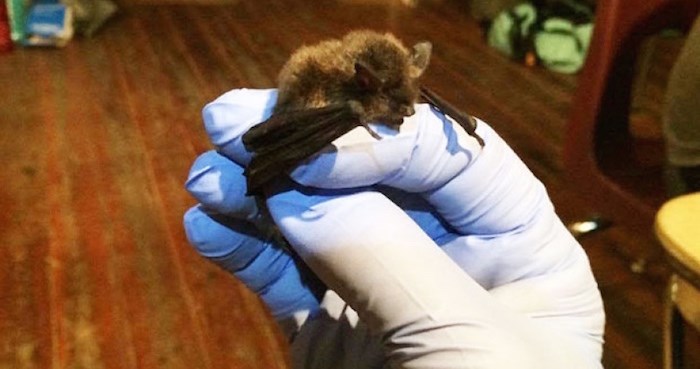The bats aren’t leaving Burrvilla.
That’s according to Metro Vancouver, which is overseeing the largest bat colony of its kind in B.C., a 3,000-strong contingent that’s taken up residence in the attic of a historic house in Deas Island Regional Park.
“Metro Vancouver has no plans at this time to relocate (or exclude) the maternal bat colony from Burrvilla… The bats peacefully co-exist with the resident caretaker and regular inspections reveal that the bats are respectful guests and do not cause damage to the heritage home,” a regional district spokesperson explained.
Monitored by the regional district and the South Coast Bat Society, the colony of Yuma bats and brown bats has received a lot of publicity by taking up residence in one of the most historically significant structures still standing in Delta.
In 1906, Harry Burr, whose father supported the incorporation of Delta, built the imposing Victorian-style home on the farm called Burrvilla. The house was a lively social centre for community gatherings, holding teas and weddings in its formal gardens and sponsoring a hunt club. The farm also had its own steamship landing as well as a post office and remained in the Burr family until 1974.
 Burrvilla was moved to nearby Deas Island Regional Park in 1982. (via Delta Optimist/file photo)
Burrvilla was moved to nearby Deas Island Regional Park in 1982. (via Delta Optimist/file photo)Situated in a regional park on the banks of the Fraser River, the house has now been a home for bats for over 20 years, but only had occasional monitoring until the colony grew and an expanded program was initiated in 2016.
The growth of the colony prompted the City of Delta to raise concerns last year about the state of the century-old house.
“I don’t think that’s what that beautiful house should be used for. I really think they should be creating another space and moving them. It’s a real insult to have that taking place without any thought of removing that experimentation,” then-mayor Lois Jackson told the Delta Optimist following a regional parks committee meeting where her request for another structure to be built for the bats was denied.
In a letter to Delta council, Tom Bearrs, president of the Delta Naturalists Society, warned that moving the important colony would be difficult for several reasons.
“With such a large colony, it would require at least two large ‘bat condos’ in the area to house them. Building and installing these would be a monumental undertaking. And there is no certainty that these bats would accept an alternate artificial new roost. The impact on trying to move these sensitive animals would more than likely be tragic,” Bearrs stated.
Alan Burger, president of B.C. Nature, wrote how bats in their nightly forages consume huge numbers of insects, including mosquitoes. A lactating female can eat up to 1,000 insects per night, he explained. “The benefits to the community are numerous. In fact, you might say that bats perform a valuable public service.
“Metro Vancouver staff clean the attic of guano (bat droppings) when the bats are not in residence. These staff are conscientious with regard to the condition of Burrvilla and state categorically that the droppings are not harming the house.”
Little brown bats are listed as an endangered species due to the threat of white-nose syndrome, a disease caused by an invasive and highly infectious fungus, which has added more importance to monitoring the colony.
Last fall at Deas Island Regional Park, the province announced that $40,000 would be directed to help combat white-nose syndrome. The pathogen first turned up in North America in 2006 and reportedly by 2012 was associated with at least five to seven million bat deaths.
A report to the committee also noted that in 2016, acoustic monitors and ultrasonic microphones were set up to study bat foraging within the park, which found that six different species use the park and surrounding area as habitat, including the Mexican free-tailed bat, a new species emerging in B.C.
“This data indicates Deas Island Regional Park is part of a broader habitat network that supports regional bat diversity,” the report states.


.png;w=120;h=80;mode=crop)
.png;w=120;h=80;mode=crop)